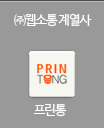What's Holding Back From The Buy Fakes Industry?
페이지 정보
작성자 Tom 작성일25-07-07 18:52 조회40회 댓글0건본문
The Intricate World of Buying Fakes: Understanding the Appeal and Risks
In an ever-evolving market affected by consumerism and fashion trends, the allure of counterfeit items-- frequently referred to as "fakes"-- has become a subject of prevalent argument. From high-end bags and designer clothing to electronics and cosmetics, fake items record a substantial portion of customer interest due to their perceived value and price. This post looks into the multifaceted world of purchasing fakes, exploring both the mental and social elements driving this phenomenon, as well as the potential dangers related to it.

The Appeal of Buying Fakes
Buying fakes is mostly driven by numerous crucial incentives, including cost, ease of access, status improvement, and social impact.
1. Expense Efficiency
- Cost: Fakes offer consumers with the chance to own items that are otherwise out of monetary reach. A luxury handbag that retails for ₤ 3,000 could be duplicated and cost a portion of the rate, making it appealing for individuals on a minimal budget.
- Perceived Value: Consumers might feel they are getting the same quality and look as a high-end product without the hefty price tag, which is attracting for lots of.
2. Sociocultural Factors
- Status and Identity: For numerous, purchasing high-end brand names represents wealth, success, or social status. Fakes permit individuals to predict a specific image without the monetary problem, lining up with their wanted identity.
- Peer Influence: Social circles can play a considerable role in encouraging the purchase of fakes. Patterns typically flow within communities, leading people to do the same for fear of being socially ostracized.
3. Ease of access and Convenience
- E-commerce Platforms: The rise of e-commerce, especially markets like Alibaba, eBay, and social media platforms, has actually made counterfeit items more accessible than ever. Consumers can quickly search and acquire fakes from the comfort of their homes.
- Worldwide Distribution: Counterfeit products are readily available worldwide, permitting access to items that may not be in your area readily available.
Types of Fake Products
When going over counterfeit products, it's important to comprehend that not all fakes are created equal. The following classifications typically encapsulate the kinds of counterfeit items readily available:
A. Fashion Items
- Clothes and Accessories: Imitations of designer clothing, shoes, and accessories prevail in the market.
- High-end Handbags: Replicated high-end handbags typically attract considerable attention due to their identifiable branding.
B. Electronics
- Tech Gadgets: Counterfeit electronic devices, consisting of mobile phones and accessories, are typical, frequently marketed as premium brand names at a lower rate.
- Software application: Pirated software application licenses and applications can also fall under the umbrella of counterfeit products.
C. Cosmetics and Personal Care
- Skin care and Makeup: Counterfeit cosmetics can be particularly concerning due to security dangers and regulative issues connected with active ingredients.
The Risks of Buying Fakes
While the allure of counterfeit products can be strong, possible purchasers need to consider the accompanying threats.
1. Legal Consequences
- Copyright Theft: Purchasing counterfeit items breaches intellectual residential or commercial property laws, and customers might be punished depending on local legislation.
- Seizure Actions: In some countries, police have the authority to take counterfeit goods and impose fines on individuals caught buying them.
2. Ethical Implications
- Assistance of Criminal Enterprises: The counterfeit market is typically associated with orderly crime, and consumer participation can accidentally support dishonest practices and exploitation.
- Influence On Genuine Brands: The proliferation of fakes undermines legitimate businesses, adversely impacting their revenue and brand stability.
3. Safety and Quality Concerns
- Substandard Quality: Often, counterfeit items do not satisfy the quality standards of genuine items, which can cause regular frustration.
- Health Risks: Falschgeld Drucken lassen This is particularly true for cosmetics and electronic devices, which may include harmful active ingredients or faults that present safety risks.
Buying Fakes: A Concluding Perspective
The practice of acquiring counterfeit items is an intricate issue intertwined with economic, social, and ethical considerations. While attracting for numerous due to price and access to luxury aesthetics, the unfavorable consequences expose the darker side of this consumer behavior. In a world where authenticity is progressively valued, understanding the risks and implications of purchasing fakes is necessary.
Before purchasing, people must assess their inspirations, the potential legal and ethical ramifications, and ultimately decide what best lines up with their worths and monetary stability.
Frequently Asked Questions (FAQs)
Q1: Are counterfeit goods unlawful all over?
A1: The legality of counterfeit items differs by nation. While some countries impose rigorous laws versus their sale and circulation, others may have more lax policies.
Q2: How can I determine counterfeit items?
A2: Look for indicators such as bad workmanship, misspellings on labels, and rate inconsistencies that seem too great to be true. Researching legitimate brands can likewise aid in identification.
Q3: What should I do if I unconsciously purchase a fake product?
A3: If you discover that you have bought a counterfeit product, consider connecting to the seller for a refund if possible. You may also report the item to regional consumer security agencies.
Q4: Are there any benefits to buying fakes?
A4: While some argue that buying fakes can offer an opportunity to experience luxury items at a lower price, it is vital to weigh these viewed advantages versus the legal, ethical, and health threats included.
Q5: How can I support ethical consumerism?
A5: Supporting ethical consumerism includes buying from reputable brand names, promoting for openness in the supply chain, and motivating accountable business practices within your community.
By seriously analyzing the impulse to buy fakes, consumers can make informed choices that eventually contribute to a more ethical and sustainable market.

댓글목록
등록된 댓글이 없습니다.




















